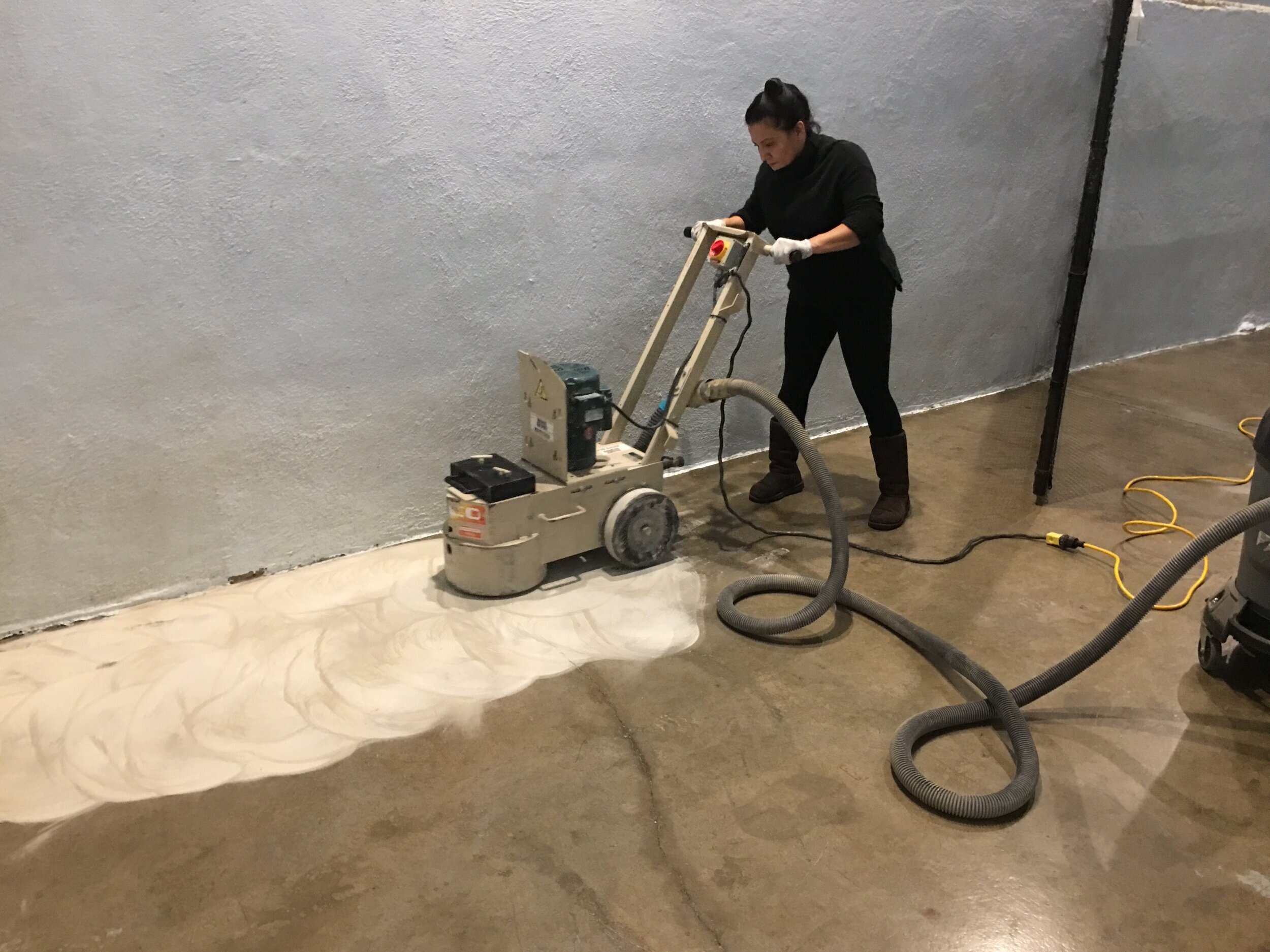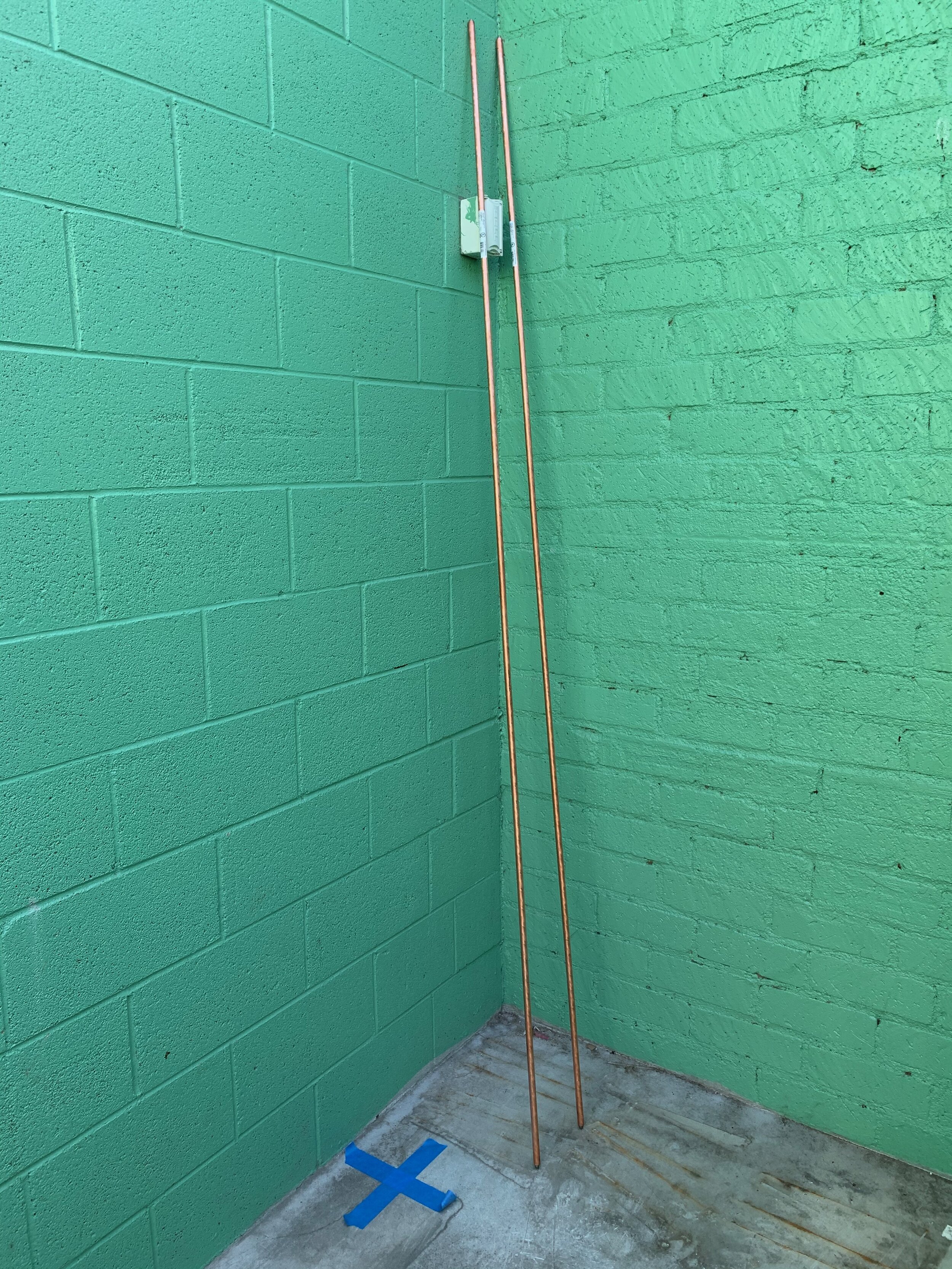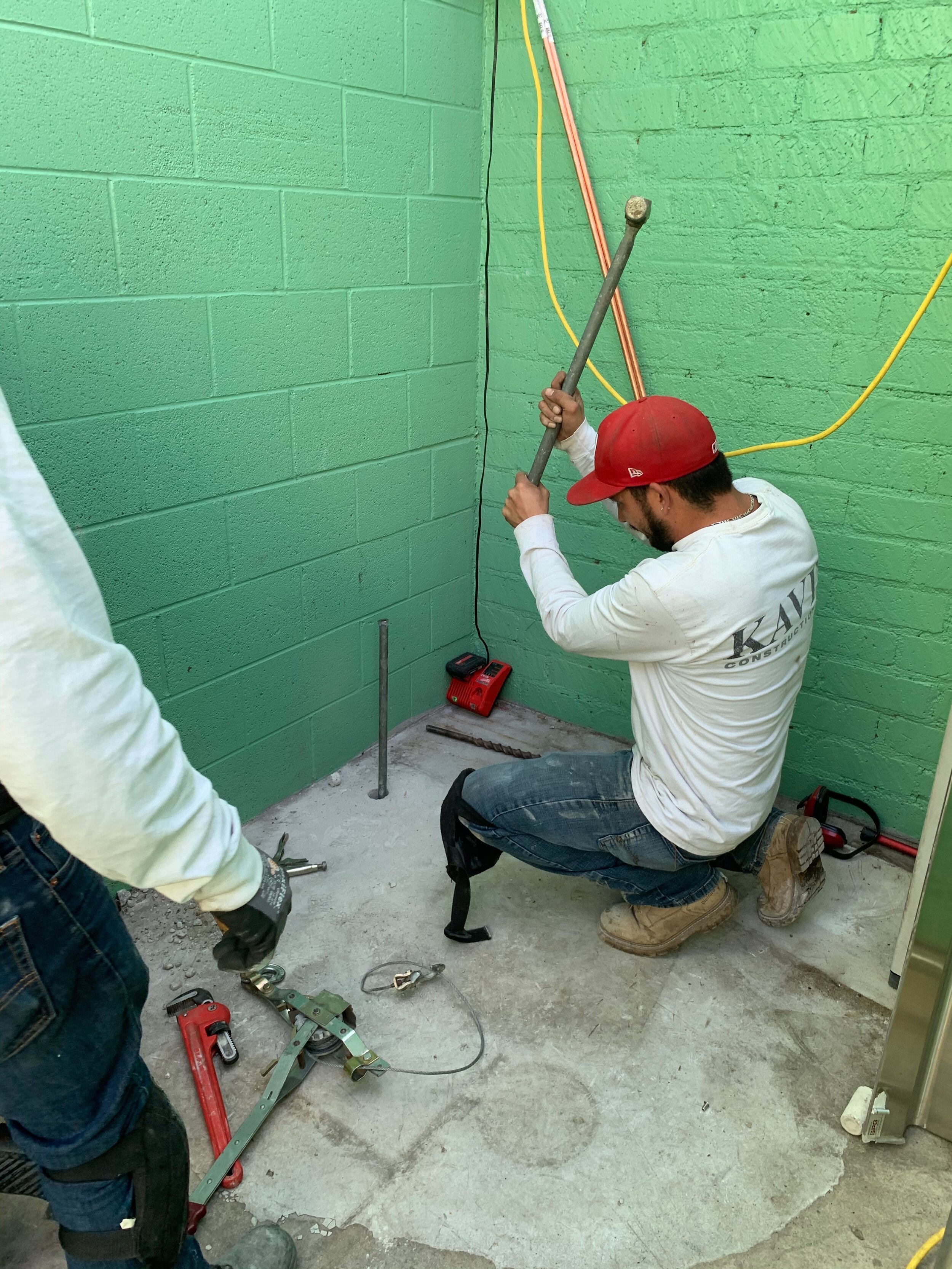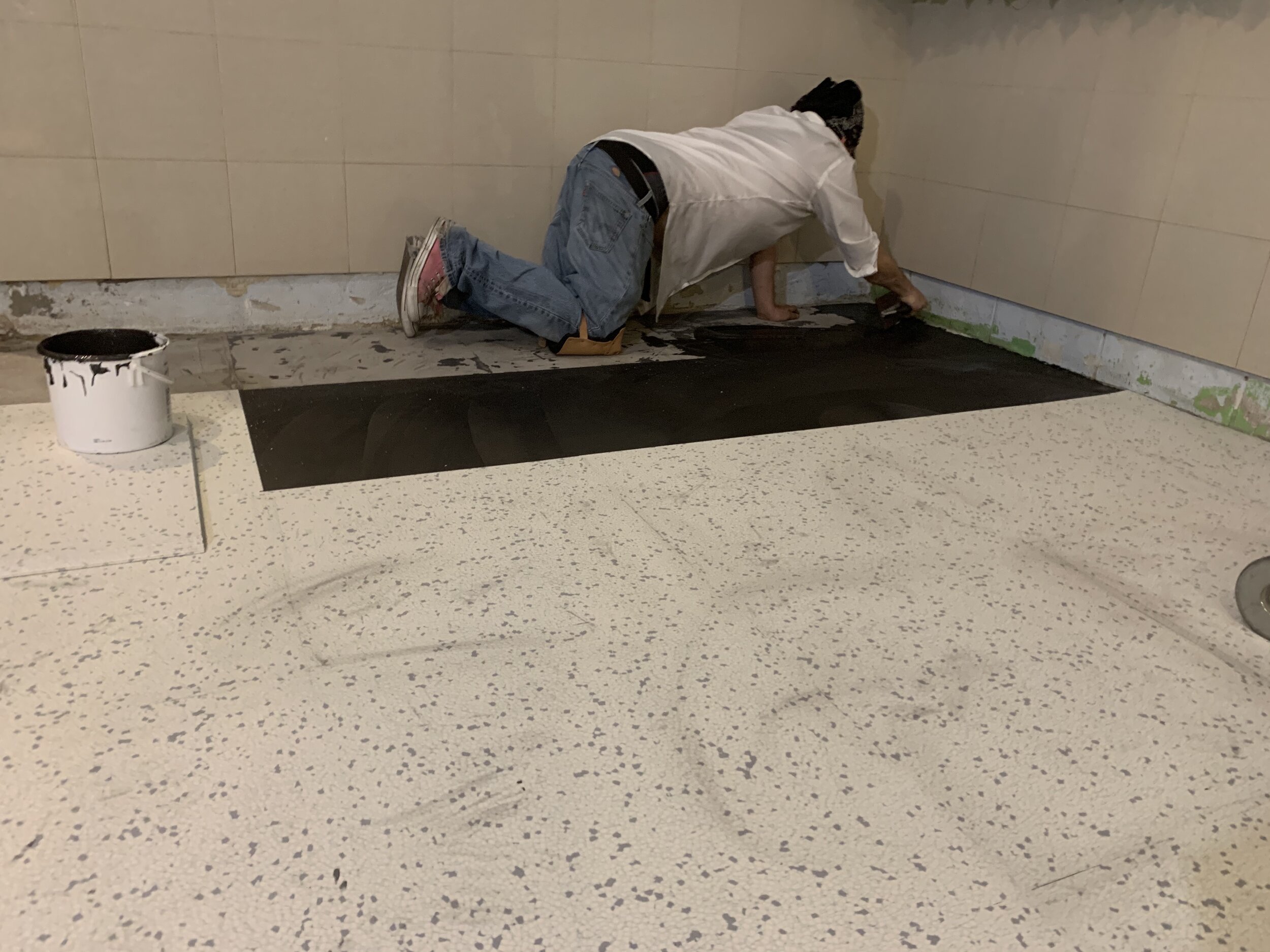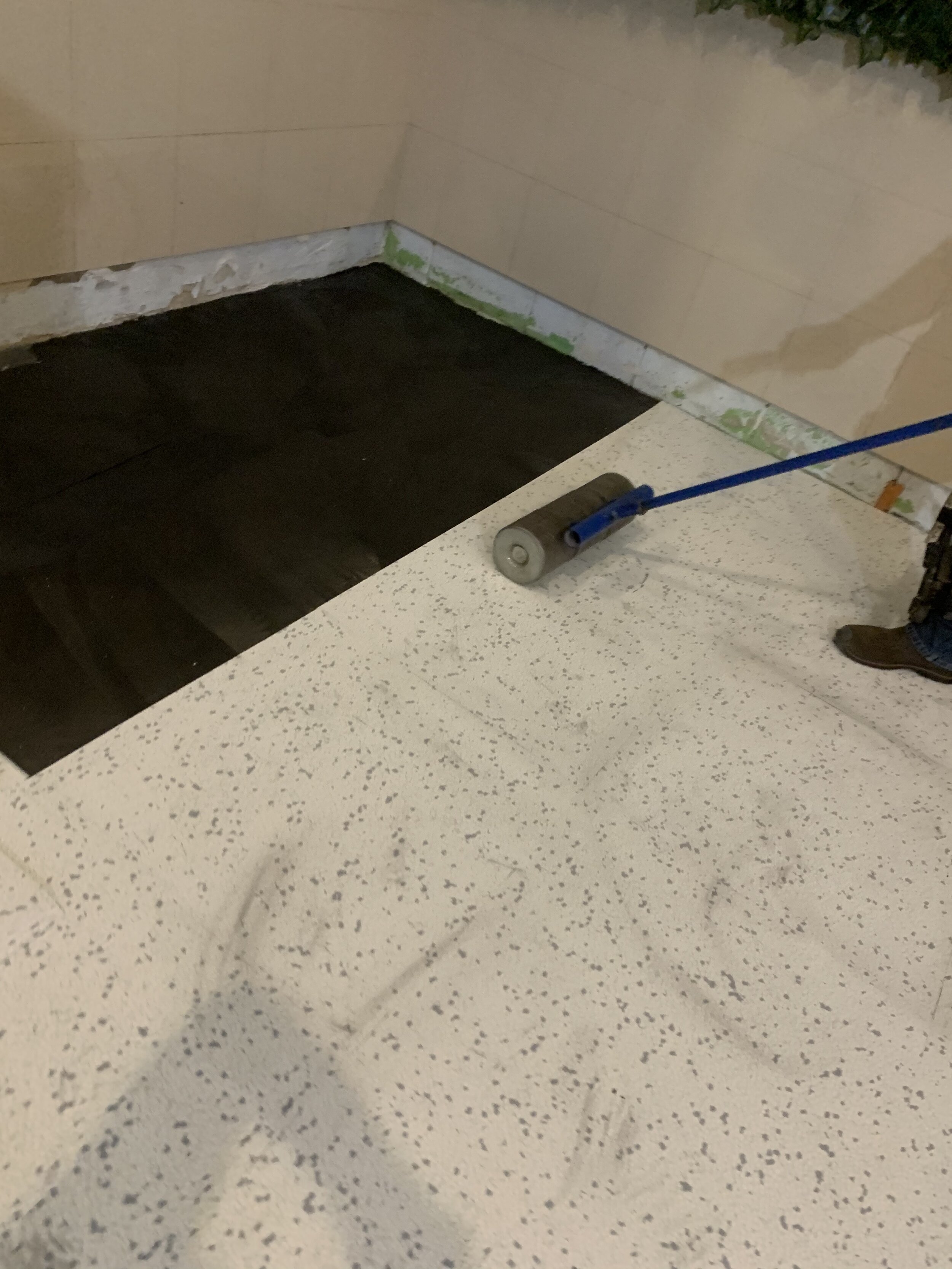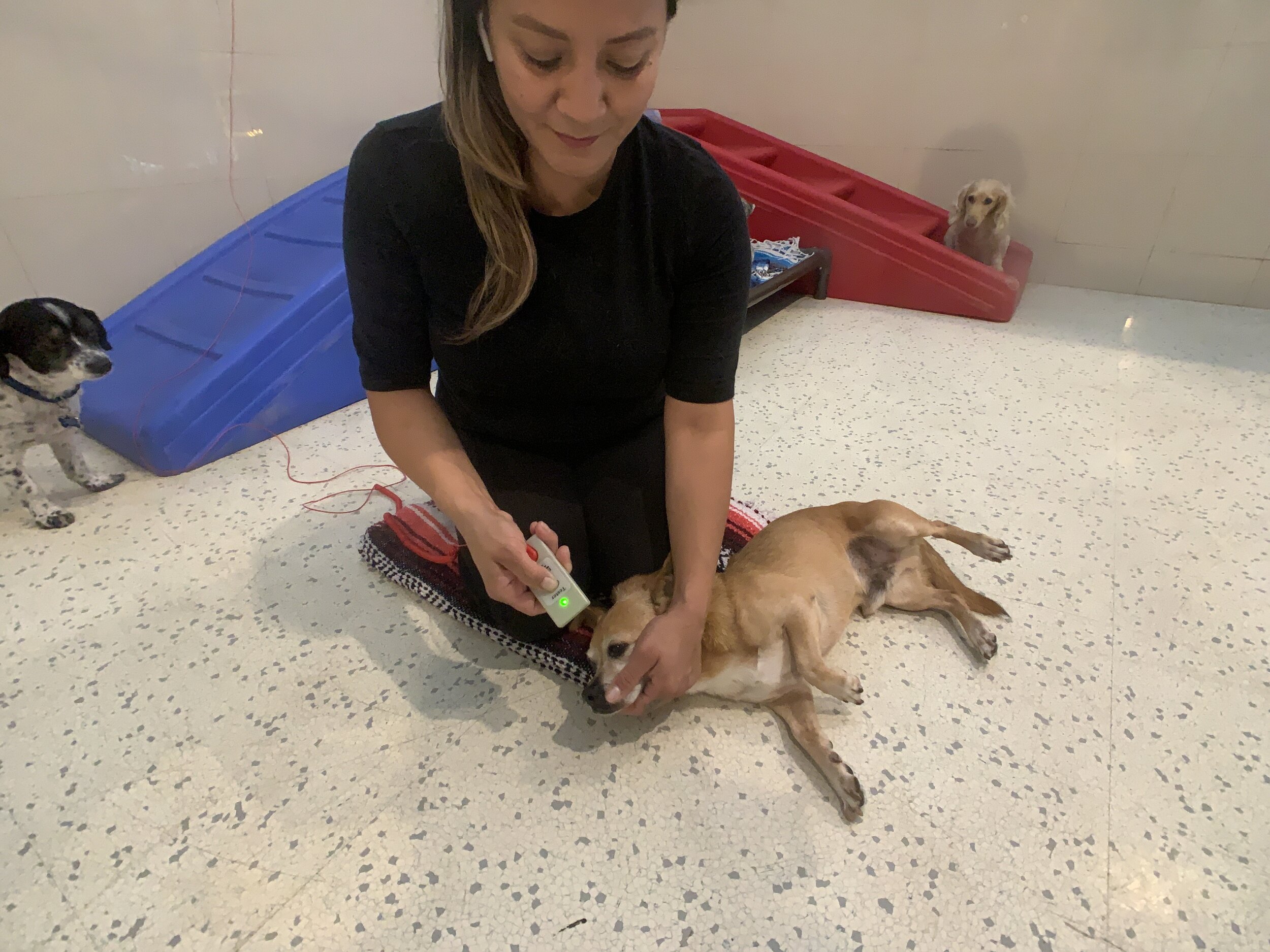5 Essential Questions to Ask Before Choosing a Pet Accommodation
Introduction to Pet Accommodation: What You Need to Know
Choosing the right pet accommodation is crucial for your peace of mind and your pet's comfort when you're away. It's not just about finding a spot; it's about ensuring your furry friend is safe, happy, and well-cared for. Pet accommodations can range from simple kennels to luxury pet hotels, each offering various services and amenities. The basics usually include feeding, walking, and playtime, but many places now offer extras like grooming, training sessions, and webcams for you to check in on your pet. The cost can vary widely based on the level of service and the facility's location. Remember, the cheapest option might not always be the best for your pet's needs. Research and ask for recommendations to find a trustworthy place that feels right for both you and your pet.
The Importance of Choosing the Right Pet Accommodation
Choosing the right pet accommodation is not just about having a place where your furry friend can stay while you're away; it's about peace of mind. Your pet is part of your family, and making sure they're in safe hands should be a top priority. Here's why selecting the right spot matters. Safety comes first. We're talking about secure fencing, no harmful substances lying around, and a place that doesn't mix large and small animals in the same space. Health care isn't far behind. A good pet hotel will have a plan for emergencies and regular health checks. Then there's comfort. Your buddy needs a cozy spot to rest, with the right temperature, enough space, and maybe even some toys. Let's not forget about socialization. Pets need interaction, maybe with other animals or caring humans. Last, ponder on cuisine. Your pet's diet is crucial, and the accommodation should cater to their dietary needs. In short, the right pet accommodation ensures your pet's physical and emotional well-being, making your time apart stress-free for both of you.
Question 1: What types of pet accommodation are available?
When you're looking into pet accommodation, the first thing to get straight is what types you can pick from. Generally, you've got a few options. There's boarding kennels and catteries, which are the go-to for dogs and cats. These places have your pet staying in their own little space or 'room.' Then, there’s pet sitting, where someone comes to your house to care for your pet or your pet goes to stay at the sitter’s place. It’s more of a homely vibe. Another option is pet hotels, which are a bit fancier, offering extra services like grooming or playtime. Lastly, there's family or friends. Sometimes they can be the best bet, especially if your pet knows them well. Each type has its pros and cons, depending on your pet’s needs, your budget, and how long you'll be away. So, think about what's best for your furry friend before making a choice.
Question 2: What amenities and care services are offered?
When you're on the hunt for the perfect place for your furry friend to stay, knowing what amenities and care services are on offer is key. Does the pet accommodation provide daily playtime, exercise areas, or socialization opportunities with other pets? Also, check if they offer any special care for pets that might need it, like administering medication or offering veterinary services. You want to make sure your pet is not just housed but properly taken care of, which means looking into the specifics of their feeding schedule, the type of food provided (can you bring your pet's own food?), and how often they clean the kennels or rooms. Don't shy away from diving into the details; after all, your pet's happiness and well-being are on the line.
Question 3: How does the accommodation handle pet emergencies?
When you’re looking around for the right place to leave your pet, you need to ask, “How do you handle emergencies?” This is crucial. The way they respond tells you how prepared they are for the unexpected. A good pet accommodation should have a solid plan in place. This includes having a vet they can call 24/7, knowing first aid, and being able to quickly get your pet to a clinic if needed. They should also ask you for your vet’s contact info and any special instructions regarding your pet's health. This shows they’re serious about keeping your pet safe. Always choose a place that treats emergencies with the seriousness they deserve.
Question 4: Can I visit my pet or check in remotely?
It’s crucial to know if you can visit or remotely check in on your pet during their stay. Some pet accommodations offer visiting hours for owners to spend time with their pets. Others might not allow visits to keep stress levels low for all animals. However, with modern technology, many places now offer the option to check in on your pet through video calls or webcams. This feature allows you to see your pet and ensure they're happy and healthy during their stay. Always ask about the facility's policy on visits and remote check-ins, as it gives you peace of mind knowing you can see your pet whenever you miss them.
Question 5: How are pets grouped and what are the socialization opportunities?
When picking a spot for your furry friend to stay, it's critical to understand how pets are grouped and the kinds of social interaction they'll get. This can make a big difference in how comfortable and happy your pet feels during their stay. So, here's the deal: Pet accommodations usually group animals based on their size, temperament, and sometimes their breed. It's to make sure small or timid pets don't feel threatened by larger or more assertive ones. What you want to know is whether they match laid-back dogs with the chill crowd and the playful ones with other social butterflies. Also, inquire about the opportunities for your pet to mingle. Some places offer supervised playtime in groups, while others may have individual play sessions for those not fond of making friends. This part is important because just like people, pets need the right kind of social life to be happy. Make sure you ask about this so you know your pet will spend their time in a way that suits them best.
Understanding Pricing and Value for Pet Accommodation
When you're looking into pet accommodations, the price tag can be a shock. But let's break it down so you know what you're paying for and can find the best value. First, understand that prices vary widely based on the type of accommodation (like basic kenneling versus luxury suites), location, and the duration of the stay. Pet hotels might charge $25 to $85 per night based on these factors. But it's not just about the number; it’s what you get for it. Ask about the specifics of care, such as the frequency of walks, playtime, personal attention, and if feedings are included or tailored to your pet’s dietary needs. Furthermore, check if the price covers any emergency healthcare services or if there's an extra charge. Additional services like grooming, training sessions, or pick-up and drop-off services can also bump up the price. It's vital to compare facilities not just by the sticker price but by the value they offer for your furry friend’s well-being and your peace of mind. Shopping around and asking the right questions will ensure you find a place where your pet is not just accommodated, but cared for, without unnecessary extras inflating the cost.
Tips for Preparing Your Pet for Their Stay
Before you leave your pet at an accommodation, there are a few key things you should do to make sure they have a comfortable stay. First, get them used to short separations. This helps reduce their anxiety. Start with quick outings and gradually increase the time you're away. Next, keep a piece of your clothing with them. Your scent will provide comfort and familiarity in the new environment. Also, ensure they're up to date on all vaccinations. This is crucial for their health and the health of other animals they'll be around. Don’t forget to pack their favorite toys and a blanket or bed they love. This will make them feel at home even when they're away from you. Lastly, inform the pet accommodation staff about your pet's routine, likes, and dislikes. The more they know, the better they can care for your furry friend.
Conclusion: Making an Informed Decision on Pet Accommodation
Finding the right pet accommodation comes down to asking the right questions and getting clear, satisfactory answers. It's about more than just a place for your pet to stay; it's ensuring they're happy, safe, and well-cared for in your absence. Remember, the right facility will not hesitate to answer all your questions and will welcome your visit to check out their accommodations. Cost is important, but it shouldn’t be the sole factor in your decision. Consider the environment, the staff's expertise, and the overall vibe of the place. Trust your gut—if something feels off, it probably is. Ultimately, the goal is to leave your pet in a place where they are not just accommodated but appreciated and loved. Taking these steps to make an informed decision will give you peace of mind while you're away, knowing your furry friend is in good hands.
The Ultimate Guide to Stress-Free Vacation Dog Boarding
Introduction to Vacation Dog Boarding
When planning a vacation, figuring out what to do with your furry friend can add unnecessary stress. That's where vacation dog boarding comes in. Essentially, it's a service where your dog can stay and be cared for while you're away. This can be anything from a simple kennel to a luxurious pet resort. Each offers different levels of care, activities, and amenities ranging from basic shelter and food to full-on pampering with grooming, play sessions, and even training classes. The goal is to give your dog a safe and enjoyable place to stay, so you can relax and enjoy your vacation, worry-free. Choosing the right boarding option depends on your dog's needs, temperament, and your budget. With this guide, we'll walk you through everything you need to know about vacation dog boarding, making the whole process smoother and your time away truly stress-free.
Choosing the Right Dog Boarding Facility
When you're planning a vacation, finding the right place for your dog to stay is crucial. You want them to be happy and well-cared for while you're away. Here's the deal on choosing the right dog boarding facility. First off, visit the place. Yes, actually go there. See where your dog will sleep, play, and eat. If it feels right, smells clean, and the dogs there seem happy, it's a good sign. Ask about the staff. They should be dog people, through and through, who know how to handle all sorts of doggy behaviors and emergencies. The ratio of staff to dogs matters too. You don't want one person looking after 20 dogs. Next, check on playtime and walks. Dogs need to move, not sit in a kennel all day. Find out how often they take the dogs out and what kind of play activities they offer. Health care is big too. Ask what their protocol is if a dog gets sick and how they handle medications. Lastly, costs matter but don't skimp on care to save a few bucks. The bottom line is, trust your gut. If you feel good about the place and the people, your dog probably will too.
Preparing Your Dog for Boarding
Preparing your dog for boarding is key to a stress-free vacation, for both you and your pet. First things first, make sure your dog is up to date on vaccinations. This isn't just for your dog's safety, but it's also a requirement for most boarding facilities. Next, consider a trial run. If your dog isn't used to boarding, a short stay before your actual vacation can help them adjust. It's like a practice round. Also, don't forget about your dog's belongings. Bring items that smell like home, like their favorite toy or blanket. This can make the boarding facility feel a little more familiar and comforting. Lastly, update the boarding facility with your dog's diet and medical needs. Clear communication ensures your dog gets the proper care. Take these steps, and you're setting the stage for a smooth boarding experience, leaving you free to enjoy your vacation.
Important Documents and Information for Boarding
Before leaving your furry friend at a boarding facility, make sure you've got all the necessary paperwork ready. This isn't just busy work; it's crucial for ensuring your dog's safety and comfort while you're away. Most boarding places will ask for up-to-date vaccination records. This usually means proof of rabies, distemper, and bordetella vaccinations. Don't be that person scrambling at the last minute — check these documents well in advance.
Next up, your dog's medical history. This includes any medications they're on, specific dietary needs, or behavioral issues the staff should know about. Being upfront saves you stress and helps the boarding facility provide the best care.
Finally, emergency contact information. This should be someone trustworthy who can make decisions about your dog if you can't be reached. Also, give the boarding facility your trip details, like where you'll be and how to get in touch with you directly.
In short, you're looking at three key things to have in hand: vaccination records, medical history, and emergency contacts. Get these sorted, and you're one step closer to a stress-free vacation—for both you and your dog.
What to Pack for Your Dog's Stay
When packing for your dog's stay at a boarding facility, think practical and familiar. Your dog will appreciate items from home that smell like you, offering them comfort in a new environment. Here's a simple list to get started:
Food and Treats: Pack enough of your dog’s regular food and favorite treats for the duration of the stay. Sudden changes in diet can upset your dog’s stomach.
Bedding: A familiar blanket or bed will help your dog settle in more easily. Ensure it’s something you don’t mind getting a bit dirty.
Toys: Include a favorite toy or two. This will keep your dog entertained and feeling more at home.
Medication: If your dog is on any medication, clearly label each medication with the dosage instructions and your dog’s name.
Emergency Contact Information: List your contact details, your vet’s contact information, and an emergency backup contact.
Leash and Collar: Don’t forget the basics. Include a collar with an ID tag and a leash for walks.
Keep in mind, less is more. Don't overpack, as it might overwhelm the facility and your dog. Stick to essentials and a few comfort items. This way, your dog will have a piece of home while staying safe and happy in boarding.
Understanding the Boarding Schedule
When you drop your dog off at a boarding facility, they follow a strict schedule. This ensures all dogs get the care and attention they need. Typically, the day starts with breakfast, followed by outdoor playtime. This gives your dog a chance to stretch their legs and meet new friends. After playtime, there's a rest period. Dogs need downtime, just like us, to recharge. Later, there's lunch and then more playtime or walks. Dinner follows in the evening, and then there's a final bathroom break before bedtime. Facilities might adjust this schedule based on your dog's needs or medical requirements. Knowing this schedule helps you understand how your dog's day is structured, ensuring they're happy and healthy while you're away.
Communicating Your Dog's Needs and Preferences
When you're planning to board your dog, it's crucial to communicate your furry friend's needs and preferences clearly. Start by telling the boarding facility about your dog's daily routine, including feeding, walking, and playtime. Does your dog gulp food down too fast? Maybe they need a quiet corner to eat peacefully. If your dog is on medication, explain how and when to administer it. Highlight any allergies or sensitivities your dog has, whether it's food or environmental.
Also, share your dog's temperament. Is your dog a social butterfly or a lone wolf? This will help the boarding staff pair your dog with suitable playmates or give them the solo time they prefer. Don't forget to mention if your dog has any quirks, like being scared of thunderstorms or disliking certain toys. The more the boarding facility knows about your dog, the better they can make your dog feel at home.
In essence, treating the boarding staff as your dog's temporary guardians by armoring them with knowledge is the best way to ensure a stress-free experience for your dog. Remember, no detail is too small if it's about your dog's happiness and well-being.
Managing Separation Anxiety: Tips for Owners and Dogs
Leaving your dog behind can be tough, not just for you but for your furry friend too. Dogs often feel stressed when separated from their owners, showing signs of separation anxiety. But don't worry, handling this doesn’t have to be a struggle. Let’s talk about how you can ease the tension for both you and your dog.
Firstly, keep your goodbye short and sweet. Long farewells might make your dog feel more anxious. Just a simple pat on the head or a calm "see you soon" works wonders. Next, leave a piece of clothing that smells like you. This can comfort your dog and make them feel like you’re not too far away. Also, consider a trial run. Before your actual trip, try leaving your dog at the boarding facility for a short period. This helps them get used to the new environment and understand that you will come back for them.
For dogs prone to severe anxiety, talk to your vet. They might suggest temporary calming solutions. Lastly, pick a boarding place that aligns with your dog’s personality. Some dogs love socializing and playing, while others might prefer a quiet corner to relax. Choosing the right spot is key to ensuring they stay comfortable and stress-free.
Remember, preparation and the right boarding choice can significantly reduce separation anxiety for you and your dog. So, take a deep breath; you’ve got this.
Picking Up Your Dog: Post-Boarding Adjustment
After your vacation is over and you're ready to pick up your buddy, there's this anticipation and joy at the reunion. But hey, it's essential to understand your dog might need some time to adjust back to regular home life. Dogs are creatures of habit, and even a short time away can throw them off their game. So, when you pick them up, give them extra love and patience. They may be overly excited or a bit withdrawn. Both reactions are normal. It's like they've been on their own little vacation, and jumping back into the daily routine might take a minute. Make sure to ask the boarding staff about how your dog did—any changes in appetite or behavior. Back home, stick to the usual routine as much as possible. Feeding times, walks, and play sessions at their regular times help them readjust. Also, keep an eye out for any health issues. Sometimes, the stress of being away can lead to minor problems like upset stomachs. If you notice anything off, a quick chat with your vet can put your mind at ease. Remember, a smooth transition back home makes the boarding experience positive for both you and your furry friend.
Summary: Ensuring a Stress-Free Dog Boarding Experience
To ensure your dog has a stress-free boarding experience while you're vacationing, focus on prep and choosing the right place. First up, visit the boarding facility with your dog beforehand. It helps your dog get familiar with the new environment, making the actual boarding less stressful. Also, check for cleanliness, safety, and how staff interact with the dogs. You want a place that feels friendly and secure. Next, consider a trial run. Board your dog for a day or two before the longer stay to see how they adjust. Make sure your dog is up-to-date on vaccinations; most places require this. Finally, leave something familiar with your dog, like a toy or blanket, to comfort them. Communication is key, too. Provide the boarding facility with all necessary info about your dog's routine, diet, and any medical needs. The goal here is simple: a happy dog and a worry-free vacation for you.
Water You Talking About?
So important is the water we drink as humans that I ask myself, are we certain we put enough thought behind the water our pets drink?
Tap water, reverse osmosis, spring water or some sort delivered to your home or office, Brita, Zero, bottled, the options are literally endless. But, when it’s all finally said and done, it’s most likely the tap water that is freshly drawn into a drinking bowl and lapped down by our happy furry friends while we stand by unknowingly partaking in their demise. Sorry, not trying to be dark. Just bring awareness to something we may not have known.
What are total dissolved solids? Referred to as TDS, can be a collection of minerals, sediment, sand and waste (other crazy stuff too) that is left in your tap water after treatment. Some of these solids are being removed and some are being added. These TDS’s are measured in parts per million PPM and even PPB (billion), so a reading might look like 295 in PPM’s and 29 in PPB’s. These numbers give us an idea of just how much TDS is in our tap water.
Most pet parents have no clue what their local TDS count is and why should they? You only use that water for what? Flushing toilets, washing clothes and dishes, watering plants, showering and maybe boiling some ramen or beans, brushing your teeth (do you brush your dogs teeth?) and oh yeah (and our point) using “tap water” as a main source of drinking water for pets.
So why is W2W.dog bringing this to your attention? Why not? It’s a harmless approach to preventative care for your pet in our opinion. We are not against what any city has done to treat their water for local consumption. We know they are doing their best to remove as many contaminates as they can. Read for yourself. They do advise against certain individuals consuming tap water, did you know that?
W2W.dog is raising the bar high when it comes to drinking water for your pets. Let’s talk more about how we treat our water post tap in the months to come.
More about our earthing journey.
While the family and I have been earthing now for over 5 years, we’ve been testing our earthing floor now for about 2 years. We installed this floor right before Covid hit and what a blessings that was. After the announcement of only essential workers being able to work I knew this floor and it’s abilities would be essential in and of itself.
During Covid, as a business owner and employee of Wags 2 Whiskers we found ourselves utilizing the benefits of the flooring system with the dogs and volunteers on sooo many levels.
Some of the things we started doing and offering as a service include
Indoor walks and exercise can now simulate being outdoors on the bare earth
We can do yoga indoors and it’s like we are on the beach…what!!! Thats crazy, but it’s true.
How do we know this? Clint Ober, Dr. Senatra and a mysterious guy named Gaetan who is the director of Earthing Institute, and some other cool organizations, pretty much make up the dynamic trio (in my opinion) and why we ALL know about earthing on a much deeper level.
My God, I AM still learning more and more each day I dive into this phenomenal research. I have my own ideas to further study as well (wink wink). My point is, these guys are busy, super busy making stuff happen out there. For the past, IDK, 18 months or so, I’ve been trying to contact them about this floor and what it can do. Why? Because I think it’s cool. And I like knowing our dogs are grounded and earthing indoors on vinyl. This can be done with rubber too. ESD floors come in soooo many different materials it’s literally endless.
I don’t know. Part of me thinks I’ll never meet these heroes and that’s OK, because we have been inspired by them. And hadn’t they been inspired by those who inspired them? Of course, did they meet them? Maybe.
We love earthing and we believe it to be another raw source of healing energy for the body. Just like Dr. Senatra said during and interview with Dr. Mercola.
And because of this, God willing, Wags 2 Whiskers aims to continue creating and using this flooring system for dogs and humans to do all kinds of marvelous and regular things on.
Stay tuned….
Earthing Play
Just before Covid Hit we installed a new kind of floor, we call it Earthing Play. This floor is very special and just what Mother Earth ordered for your pets.
Greetings fellow pet parents! We want to thank you for exploring a little further about what we do here at Wags 2 Whiskers. With love, intention, and gratitude, we plan on taking you with us on this journey. Join us as we discover new possibilities for serving, treating, training and even healing your pets. We are aware of your constant search for better pet care.
Let’s start by talking about Earthing.
Or rather can I just show you a really cool video?…Enjoy!
Next, Dr. Karen Becker teaches use the importance of grounding our pets.
Carolina and I (Dillion) have known about grounding, AKA earthing, for about 5 years now. We immediately understood, and more importantly, felt the benefits of earthing when we stepped bare foot onto an earthing mat at an RV roadshow in 2014. The information from the gentleman flooded us with overwhelming insights into the health benefits we had been depriving ourselves from by just wearing shoes. It was too much to absorb, we were just trying to find our favorite looking RV to daydream in (Airstream FYI).
On the ride home we found an awesome documentary called The Grounded, it’s about a community in Alaska that used simple equipment to connect individuals back to the earth and heal from pain. I’m not kidding about simple equipment btw, this guy literally handed individuals a brown paper bag with wires in it. These locals suffering from pain would drive what appeared to be a 10 inch rod into the ground or plug into the grounded portion of an electrical outlet, run a 14 or 16 gauge copper wire to their body and sleep. That’s it. Some would dig holes and lay directly in the dirt and of course there were other experiments. Watch the documentary.
SOOOoooo much has happened since that day. We started exploring new ways to ground and one day it downed on me, I think I can make a new floor for the dogs using ESD (Electric Static Dissipative) flooring and you know what? It worked. Now there’s a lil fine tuning involved, like Conductive vs Static Dissipative and you can learn all about that here from the President at StaticWorx David Long. David doesn’t know it, but for the past 4 years he has been my guru when it came to ESD tech. He loves what he does and pack his videos when TONS of useful information. Thank you David! These dogs don’;t know how good they have it because of your good work. (Video Below)
Once I had a good understanding that I would be able to accomplish this floor I wanted to start really digging into Earthing. The benefits, the science, the LOVE!!!!
A lil disclaimer if you will. I am not an inventor nor am I trying to intentionally infringe on patents or claims. I am simple stating that I freely took parts and pieces of flooring, adhesive, copper wire and rod and since 2019 have been making these floors resemble a similar Ohms resistance of the earths surface. Between 80k and 35 million. We successfully accomplished this both on a single floor and 2nd story floor at the end of 2019 you can see me and Carolina working on that in the pictures above, she’s such a strong woman. I Love her.
Holistic Care for Your Dog - Filtered Enriched Hydrogen Water
The gunk in tap water.
A while back, this tweet really took off.
I, like thousands of others, chuckled. How cute and also true. If your dog could give you filtered water they probably would because you’re their world.
So when we’re at work for nine hours a day, and our best doggie friend is at daycare, wouldn’t we want the very best for them as well? For sure.
Enter one of the holistic features of Wags2Whiskers. When Dillion and Carolina designed the grounding floor to support the dogs with the benefits from being connected to the earth, they had a choice what color to paint it. A lot of daycares paint the floors black, or a dark color, or have AstroTurf. The esthetic is obvious, so none of the dog’s excretions can be readily seen. But what if you cared a little extra about the dogs and wanted to check on how their bodies are functioning?
Although it’s not the most appealing, Dillion and Carolina at w2w decided to make the floor white which allows pee and anything else to be seen. Then if the dog’s excretions were questionable, they’d be able to bring it to the attention of the dog’s owners.
Dillion and Carolina began to notice something interesting. When new dogs would come in and pee on the floor it would leave a more noticeable stain, almost acid like. If the dog was on medication the pee would be a much darker yellow. Of course, the stains would linger, (and eventually fade) but the new little guys pee pee stains would linger longer. What gives? Is it the water?
Let’s give the dogs better water. Like extremely better,…superior even!!
So, in a nut shell this is there water process.
Tap - Distilled - Remineralized - Hydrogen Enriched - Quantum Entangled
That last parts got me scratching my head.
Distilled water is known to be better for your body and your cells (science behind distillation). Many extra and unnecessary minerals or substances, like chlorine, that are added into our normal tap water. I remember a friend telling me that over many years this is the stuff that can gather between your joints and begin to act like “concrete”. A filtration system, like the Waterwise one they use, allows that sediment to be separated out so that we can drink a purer water, which duh, is better for the whole body. When you’re giving your dog this pure water, you’re keeping all that gunk out of their little bodies. Picture of the sediment gunk . . .
Wags 2 Whiskers does a step up from just purifying the water. They understand they just stripped ALL minerals from that water by distillation and we as humans can replace those minerals via good organic foods we eat and juices we drink or supplements take. But what about the doggies and kitties? Their food isn’t always the best and how do you tell a pet parent to up their dogs quality of food without offending? You take care of the problem, that’s what you do. And that’s what Carolina and Dillion at W2W did. They remineralize the water with yet another filtering process that replenishes good minerals like calcium back into the water.
Not done yet…
The precious life supporting liquid is then run through a hydrogen enrichment system designed by Synergy Science. In research studies this enriched hydrogen water has been shown to improve athletes body performance as well as increase cognition. Essentially they’re taking out the gunk, remineralizing the water and adding hydrogen. CliffsNotes says that it helps the body to function better, which heck yeah, we all want!
Still, not done yet.
So those guys at Synergy Science teamed up with a scientist who invented a machine called E-Lybra. Read about it, because I can’t explain it. The tech is called Synergy Resonance and that allows Wags 2 Whiskers set the water at particular frequencies to support your pets health even further.
Carolina and Dillion have been informed of new tier settings coming soon.
https://synergyscience.org/synergyresonance/
And now it gets cooler.
After the dogs at daycare were drinking the water for 2-3 weeks their pee was lighter in color and completely stopped staining the floor. For obvious reasons we can’t interview the dogs but based on the human research the dog’s bodies, and minds, are most likely feeling better. Woof.
The water that our dogs drink matters and I think the tweet is accurate.
Our dogs would do the same for us.
Check out other holistic features at Wags2Whiskers and find out all the unique ways that they take care of your furry best friends.
Vega’s 2nd Adventure with Doggie Neurofeedback
HI hoomans,
It’s me, Vega. I’m here to share a few more updates in my brain training or neurofeedback. And I promised to show you some of my brain graphs this time.
So first, I wanna brag that I’ve been told lately that I’m such a sweet dog by hoomans who watch me at doggie daycare. They say that I’m one of the easiest dogs to care for which, oh stop, tell me more, makes me happy to hear. Who doesn’t want to be a good boy or girl? Bashful blush. Duh, I do.
As far as neurofeedback, the hoomans told my owner that I used to rattle the table before but now I just lie down and chill while my brain does its thing.
I’m getting better at leaving my owner when she goes to her job. I had perfected the statue like body and betrayed face when she used to drop me off. It’s a big world out there and what if I wasn’t there to face it with her?
but why?
But lately, I’ve been a bit better. At the doggie daycare I like, I walk right in because I know my other doggie friends are there to play with, plus hoomans who give me attention. And I like attention.
Lastly check out two of my brain graphs.
Feb 16
April 6
I’m not sure exactly what they mean but I’ve been told that my brain and all those lines are becoming more calm. I guess it’s true. I do feel a little calmer in my life.
Welp. Face licks to all,
Vega
Vega’s Adventure with Doggie Neurofeedback
As you might know from my owner’s past blog, Diary of Help for An Anxious Dog, I (Vega, the dog), am getting Neurofeedback because apparently, I can be very “anxious” or whatever.
At first, I was weirded out going to a new, strange place. . . .
Omg. Omg. Someone please hold my paw.
Still mildly suspicious.
. . . but now it’s ok!
I’m still not sure how I feel about the neuro since I’m put on a table and things are attached to my head with wires. I like to stand because you never know what to expect: dog scout motto - gotta always be prepared right?
After a while I get tired and lately, I’ve started lying down towards the end.
This is fine??
Whew. Ok. It’s fine.
Here’s the neat part. My owner took me to the park afterwards and I ran to the other end of the park to sniff everything and I didn’t even look back at her once. Normally I’d only go a short distance away and check on her multiple times – you know, make sure she didn’t disappear and is doing ok. Can I get a woof woof. Um, no, it’s not co-dependent. Rude.
I’m to the left of the human in the white outfit. Look how far away I am!!
Anyways . . . now, when she goes outside to put laundry in or to take something to the trashcans, I’ve been relaxing till she comes back. Sometimes I sit on the floor. Sometimes, I keep lying down on my bed the WHOLE time. She seems happy about this, but more importantly I’m learning that she always comes back.
Next time I’ll show you some graphs from the neurofeedback and how my brain is learning to be more calm.
Welp. Face licks to all,
Vega
Diary of Help for An Anxious Dog
All eyes fix on me as I picture myself in front of a room full of people “Hi, I’m so and so,” I say, “and I’ve got an anxious dog.”
My breath holds. A pause as I stare out through the crowd.
Then one person nods and then another until everyone gives that solemn head tilt, the tight smiled purse of the lips, the brow furrow of understanding. Maybe someone even slow claps. And the dogs begin to whine next to their owners, because duh, of course we had to bring them. They’re anxious and we can’t leave them alone, yet the stress of that is palpable in the room.
They say that dogs mirror their owner’s emotions.
Sure, when my dog was a few months old I went through a breakup that wasn’t my choice. I’d wander around the neighborhood like a zombie. When my coffee pot decided to explode coffee grounds all over my kitchen and I couldn’t figure out how to read the directions, I collapsed on the kitchen floor as my dog came over to lick my face with gusto. When I had to do errands, she would howl for hours and I’d get notes on my door from the neighbors. When I took her with me to the store, she was in the car for 5 minutes and someone called the cops because she was frantic without me, even though she had food, water, air and was in zero danger.
When I moved into a home with a bunch of roommates she went through phases. Let’s whine and hyperventilate when my owner leaves the house. Let’s rip all the blinds off the windows. Let’s dig through everyone’s trash. Let’s leap onto the kitchen island and pretend we’re Mufasa. Let’s eat all the dry pancake batter and drink all the water and throw it up all over the house. Let’s escape the front yard until another roommate sees me wander by the window of a nearby Starbucks. Why not?
As an associate psychotherapist myself, I did everything I could do to move myself through the breakup and yet even when I was ok, my dog still wasn’t.
She was the perfect little angel of peace if I was right there, but if I left and no one else was home, oh boy. And for those of you who might be asking, yes, I paid for a trainer and did the training and yet, still worried without me, still anxious.
Enter me, in present time, moving into my own little place and getting another job which requires me to find an early dog daycare (drop off at 6am). There are not that many places that offer that early of a drop. I find one, Wags 2 Whiskers, talk to a lovely woman Carolina, and drop her off for a trial. Fifteen minutes later, Dillion, the husband comes out and tells me that she didn’t pass the trial for the daycare.
My heart sinks and I feel like crying. But she’s so sweet, I think.
He explains to me that they need to be able to leave the dogs if they need to attend to another dog and when he stepped out of the room my dog freaked out without a human which means she’s not a fit at this time.
Taking her leash, I nod feeling like somehow (and I know this is not true) that this means that I’m a bad dog parent, that it’s a reflection of me. But this is exactly why I need the daycare because she can’t be left alone! My heart feels like someone put a heavy stone on it and my mind begins to race. What am I going to do now?
He tells me that they’re starting to offer Braining for dogs, Brain Training for dogs, that specifically struggle with anxiety using NeurOptimal, an FDA certified general wellness product that can assist doggies in feeling more calm, focused, and helps them manage stress, and cope with things better.
As an associate psychotherapist I have a colleague who gives Neurofeedback sessions for clients that have experienced trauma. Neurofeedback helps with training the nervous system to be more naturally balanced so that we have a lower baseline of activation and a greater capacity to deal with stressors. It can also help the nervous system to remember what it’s like to be relaxed, or like it was before the trauma got recorded in. If we can identify what it feels like to be relaxed our brain may seek out more of that relaxing feeling. Basically, neurofeedback works by providing feedback to the brain so it can heal itself through neuroplasticity. If you’re interested in learning more check out this Harvard University article on Brain training.
What all of us are seeing with our anxious, stressed, or nervous dogs is essentially how trauma works in our nervous system.
For anyone who’s experienced trauma we will find that our nervous systems don’t feel safe even when in this moment we might be safe. Our nervous system is still getting the messages - scary, terrible, run, fight, freeze, collapse, disassociate.
This is why I’m so glad I found Dillion and Carolina at Wags 2 Whiskers. Since I believe in neurofeedback and have seen positive results, I was like, hell yeah, when can I bring my dog in to help support her?
So far, my dog has received two sessions of Braining (doggie brain training), but the other night I was able to go out to the trash can outside and instead of her frantically waiting for me at the door and pushing her head through my new blinds, she was lying on the bed where I’d left her, looked at me when I walked in, and slapped her tail.
This may seem subtle, but for me this was huge.
To be able to find something that can finally support my dog makes me so happy.
I have skills to work with humans with trauma but I didn’t know what to do with my dog or how to help her and it was a helpless feeling.
Authenticity is important for me and I can feel the passion that Carolina and Dillion bring and how they put a little bit of both of them into their business.
They are unique in what they’re building because they are fully set up and qualified to assist doggies with the brain training at their dog care facility that includes dog daycare, grooming, and boarding. Also cool, is that doggies usually can train faster than humans because their prefrontal cortex is smaller so less sessions are required for dogs, versus humans. The eventual goal is to have both humans and dogs be able to heal together.
A few other things that make Wags 2 Whiskers different and unique is Earthing Play (where the entire floor is a grounding mat), hydrogen water, Theraclean baths, and Red Light Therapy.
There’s a lot to say about each of these but the most important thing to take away right now this:
“If you have an anxious dog, there’s hope. It’s possible to support your dog with Braining, brain training for your dog.”
Their whole setup is similar to what I believe about healing: We’re all capable of healing, wholeness, and health. We just might need a little support. If trauma has been stored in our nervous system it means that it can be worked out. We, as humans, can support our brains in creating happier lives. And now, we can support our furry loved ones as well.
- Written by Z










